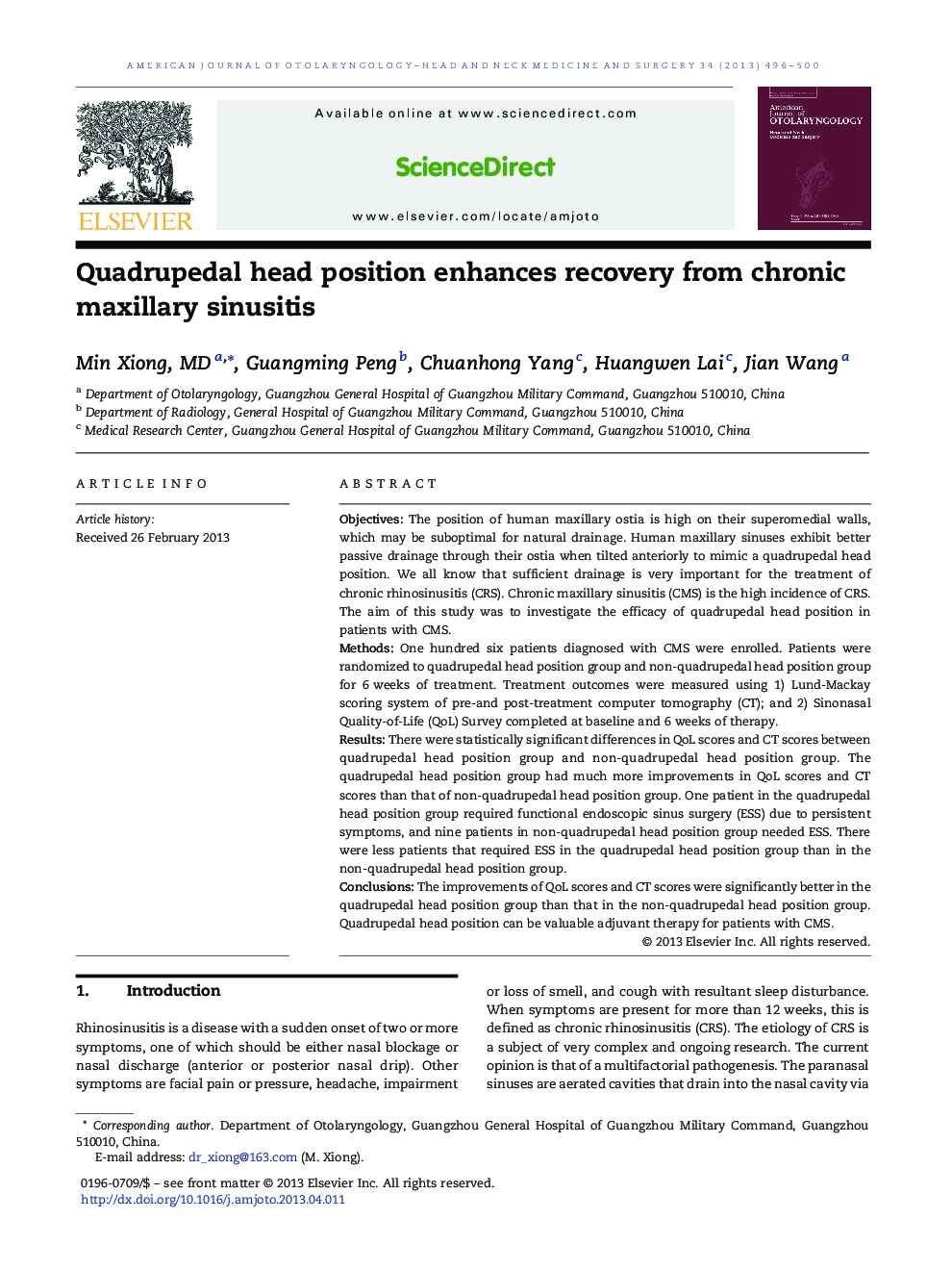| Article ID | Journal | Published Year | Pages | File Type |
|---|---|---|---|---|
| 4103144 | American Journal of Otolaryngology | 2013 | 5 Pages |
ObjectivesThe position of human maxillary ostia is high on their superomedial walls, which may be suboptimal for natural drainage. Human maxillary sinuses exhibit better passive drainage through their ostia when tilted anteriorly to mimic a quadrupedal head position. We all know that sufficient drainage is very important for the treatment of chronic rhinosinusitis (CRS). Chronic maxillary sinusitis (CMS) is the high incidence of CRS. The aim of this study was to investigate the efficacy of quadrupedal head position in patients with CMS.MethodsOne hundred six patients diagnosed with CMS were enrolled. Patients were randomized to quadrupedal head position group and non-quadrupedal head position group for 6 weeks of treatment. Treatment outcomes were measured using 1) Lund-Mackay scoring system of pre-and post-treatment computer tomography (CT); and 2) Sinonasal Quality-of-Life (QoL) Survey completed at baseline and 6 weeks of therapy.ResultsThere were statistically significant differences in QoL scores and CT scores between quadrupedal head position group and non-quadrupedal head position group. The quadrupedal head position group had much more improvements in QoL scores and CT scores than that of non-quadrupedal head position group. One patient in the quadrupedal head position group required functional endoscopic sinus surgery (ESS) due to persistent symptoms, and nine patients in non-quadrupedal head position group needed ESS. There were less patients that required ESS in the quadrupedal head position group than in the non-quadrupedal head position group.ConclusionsThe improvements of QoL scores and CT scores were significantly better in the quadrupedal head position group than that in the non-quadrupedal head position group. Quadrupedal head position can be valuable adjuvant therapy for patients with CMS.
